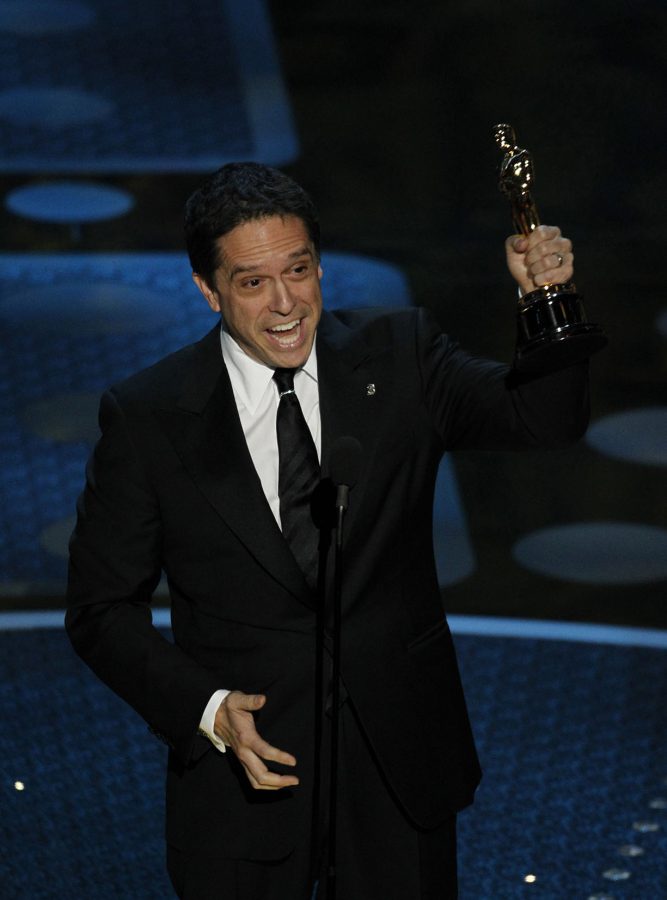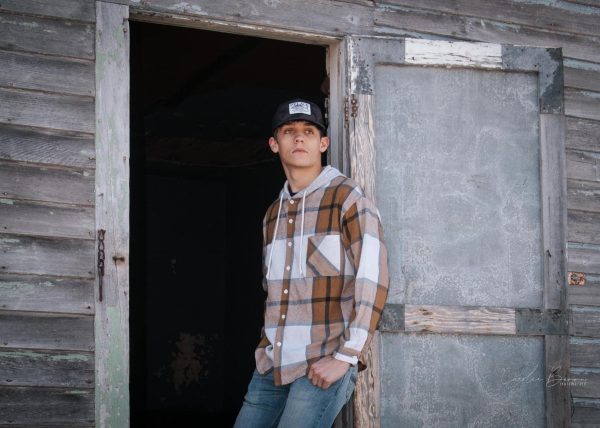He’s in tune with the Day of the Dead: Director Lee Unkrich wanted an authentic take on the celebration
Director Lee Unkrich holds the Oscar for Best Animated Feature for "Toy Story 3" during the 83rd Annual Academy Awards at the Kodak Theatre in Los Angeles, California, on Sunday, Feb. 27, 2011. (Liz O. Baylen/Los Angeles Times/MCT)
January 17, 2017
By Kevin Crust
Since we were formally introduced to Pixar via a hopping desk lamp and a rubber ball in the animated short “Luxo Jr.” three decades ago, the studio has brought to life toys, insects, monsters, fish, cars, rodents, robots and increasingly, as the technology caught up, humans.
In “Coco,” directed by Lee Unkrich and opening Nov. 22, Pixar will focus its talents toward something else entirely: skeletons.
The film takes place in Mexico and tracks the journey of a fully fleshed 12-year-old named Miguel, consumed with his familia’s generations-long ban on music. This is particularly vexing to the boy since his dream is to be become a great musician like the late Ernesto de la Cruz.
Miguel hails from a village named for Santa Cecilia, the patron saint of musicians, and modeled by Pixar on towns in the Mexican state of Oaxaca.
A mystical, magical chain of events leads Miguel to the skeleton-populated Land of the Dead, and accompanied by a streetwise vagabond named Hector, he tests his musical prowess and unravels a family mystery he never knew existed.
Unkrich has long been fascinated by the celebration of Dia de los Muertos, or the Day of the Dead, especially the iconography and folk art surrounding the event, when the living and the dead are briefly reunited.
“It seemed like a really beautiful celebration,” said the director, who comes to “Coco” with “Monsters, Inc.,” “Finding Nemo” and “Toy Story 3” under his belt. “This idea of actively and joyously remembering your loved ones who are no longer with you seemed like a great place to tell a real emotional family story and also have a lot of fun.”
Five years ago, Unkrich began planning his film but “Coco’s” path to fruition was not without bumps.
In 2013, the Walt Disney Co., Pixar’s parent, withdrew an application to trademark “Dia de los Muertos” after a public uproar over its cultural insensitivity.
“It was a mistake that happened, and we regretted it immediately,” said Unkrich.
From the beginning, Unkrich sought to involve members of the Latino community in the process “so that at every turn we could have as much authenticity and as specific a voice as possible. Hopefully, it will never be tone deaf or lapse into cliche. Based on the reactions from the consultants who we’ve shown the film to already, we feel confident that we’re doing a great job and doing right by the culture.”
The quest of authenticity extended to the characters and casting. Ernesto de la Cruz, voiced by Benjamin Bratt, is a composite of beloved Mexican musicians such as Pedro Infante, Jorge Negrete and Vicente Fernandez. Character actress Renee Victor (“Weeds”) voices another key character, Miguel’s abuelita, the Coco of the film’s title.
“One of the joys of working on the film has been Gael Garcia Bernal,” said Unkrich. The “Mozart in the Jungle” star plays Hector, Miguel’s trickster sidekick. “He’s just an amazing guy, and he’s brought so much charm and fun.”
According to Unkrich, “finding a good kid actor is like finding a needle in a massive haystack.” For the crucial part of Miguel, the film’s star, the director cast 11-year-old Anthony Gonzalez, who lives in Los Angeles and has since turned 12.
“It’s been a race against time to get this done before his voice changes,” said the director. “He’s really great, and I’m lucky to have found him. He makes the movie super-special.”
Though it’s not strictly speaking a musical, there are a lot of songs in “Coco,” as virtually all of the characters are performers. The soundtrack will be a mix of original music and Mexican standards.
“When people think of Mexican music, they most often think of mariachi, and that of course is one part,” said Unkrich. “But there’s really a vast landscape of music, and we’ve tried to embrace all of it.”
Unkrich brushed off concerns of similarities to Jorge Gutierrez’s 2014 “Book of Life,” an animated musical fantasy produced by Guillermo del Toro, which was also set in Mexico around the Day of the Dead.
“We’re telling a very different story than he was,” said the filmmaker. “Obviously, it’s still set against the holiday so there are a few common elements here and there, but the two stories are completely different. You can have more than one Christmas story.”
———
©2017 Los Angeles Times
Visit the Los Angeles Times at www.latimes.com
Distributed by Tribune Content Agency, LLC.








